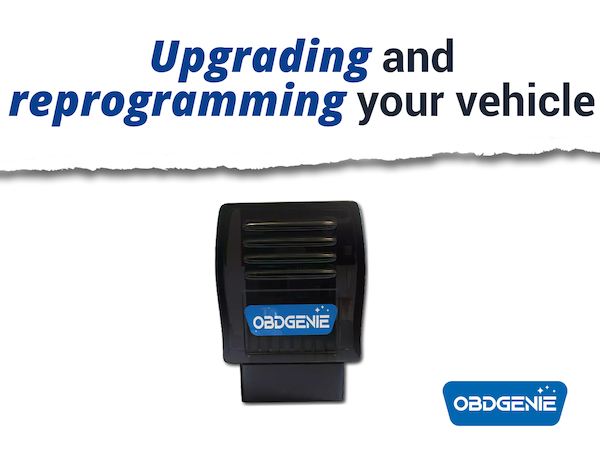
Dec 04 , 2024
Upgrading and reprogramming your vehicle
When it comes to upgrading vehicle accessories, especially those that involve electronic components or features controlled by your car's ECU (Engine Control Unit), you might need to reprogram your car to ensure these new features work correctly. Here's a guide on when and why you might need to use a device like the OBD Genie:
Why Use OBD Genie for Upgrades?
-
Unlocking Features: Modern vehicles come with numerous features controlled by their onboard computers, but some might be locked or disabled by default. An OBD Genie can be used to unlock features like:
-
Navigation systems
-
Backup cameras
-
Heated seats
-
Daytime Running Lights (DRL)
-
Remote start capabilities
-
Trailer brake controllers
-
-
Compatibility and Activation: Some aftermarket accessories require the vehicle's ECU to recognize them. For instance, installing a new rear view camera might require programming the ECU to display its feed on the existing infotainment screen.
-
Customization: Vehicle owners might want to customize their cars beyond what was available from the factory. OBD Genie can facilitate this by allowing owners to enable or disable certain features according to their preferences.
When Do You Need Reprogramming?
-
Replacing or Upgrading Factory Parts: When upgrading parts like the radio or mirror controls that might have integrated electronics, reprogramming might be necessary to ensure they function with the vehicle's existing systems. For example, adding power folding mirrors or LED lighting might require the ECU to be updated.
-
Vehicle Maintenance and Diagnostics: Sometimes, after certain repairs or when clearing codes, reprogramming might be recommended to reset or update the ECU's parameters.
How to Use OBD Genie:
-
Installation: Typically, you would plug the OBD Genie into the OBD-II port under your dashboard. This port is standardized across most vehicles since 1996, making it universally accessible for such devices.
-
Programming: Follow the specific instructions provided with your OBD Genie for the feature or accessory you're installing. This usually involves initiating a sequence through the device or an app, which communicates with your car's ECU over the OBD-II connection.
-
Post-Programming: After programming, test the new feature or accessory to ensure it's functioning as intended. If there are issues, you might need to consult the device's support or refer back to the installation guide.
Considerations:
-
Vehicle Specificity: Ensure the OBD Genie is compatible with your specific make and model. Not all features can be activated on all vehicles due to hardware differences.
-
Dealer Alternatives: For some upgrades, especially those involving complex systems like navigation, a dealership might offer programming services. However, using an OBD Genie can be more cost-effective and convenient.
Remember, while tools like the OBD Genie offer a DIY approach to enhance your vehicle, always proceed with caution, ensuring you understand the process or have professional assistance if needed. Also, be aware that tampering with your vehicle's electronics might void warranties or affect future diagnostics if not done correctly.
